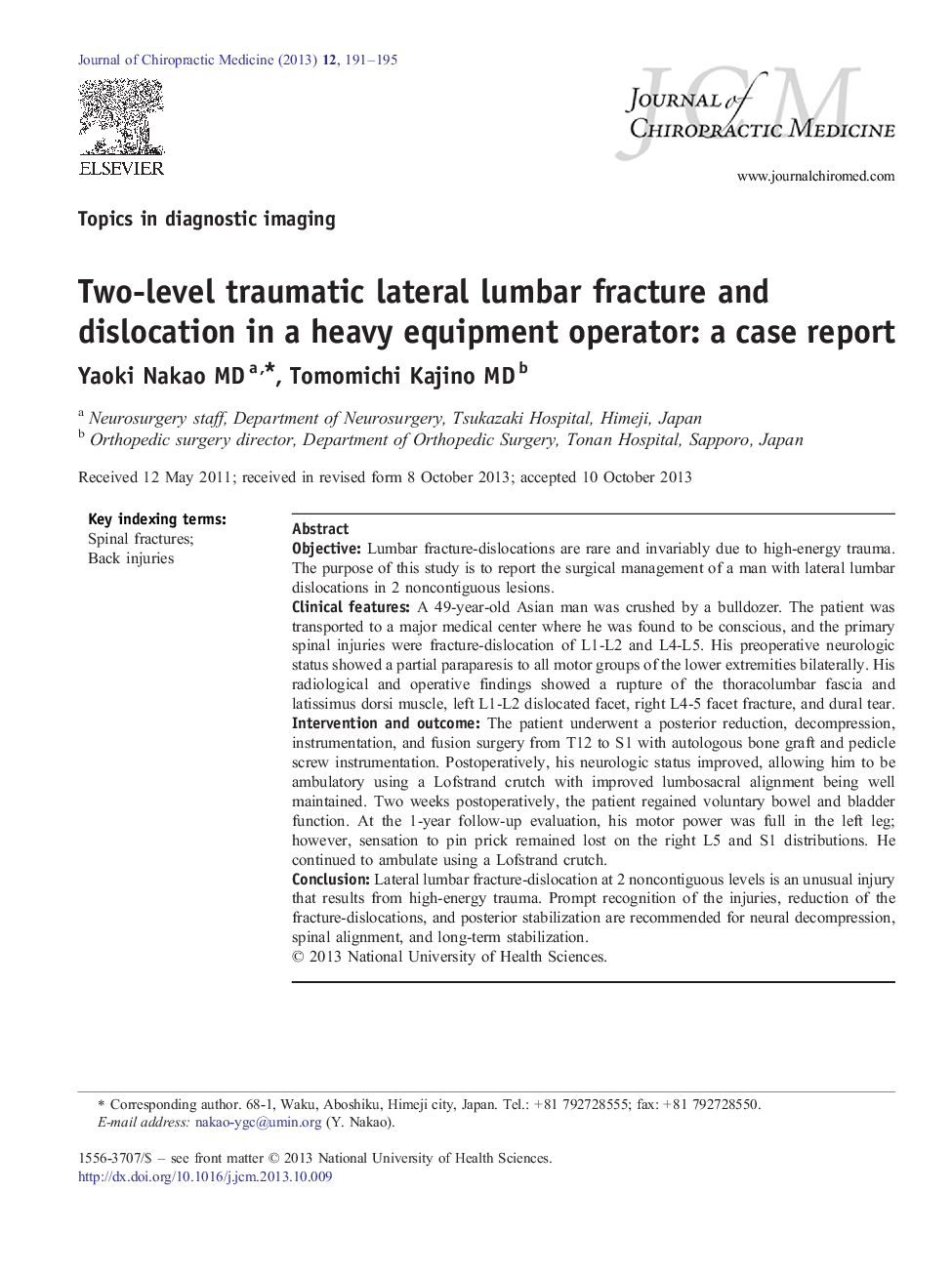| Article ID | Journal | Published Year | Pages | File Type |
|---|---|---|---|---|
| 2620010 | Journal of Chiropractic Medicine | 2013 | 5 Pages |
ObjectiveLumbar fracture-dislocations are rare and invariably due to high-energy trauma. The purpose of this study is to report the surgical management of a man with lateral lumbar dislocations in 2 noncontiguous lesions.Clinical featuresA 49-year-old Asian man was crushed by a bulldozer. The patient was transported to a major medical center where he was found to be conscious, and the primary spinal injuries were fracture-dislocation of L1-L2 and L4-L5. His preoperative neurologic status showed a partial paraparesis to all motor groups of the lower extremities bilaterally. His radiological and operative findings showed a rupture of the thoracolumbar fascia and latissimus dorsi muscle, left L1-L2 dislocated facet, right L4-5 facet fracture, and dural tear.Intervention and outcomeThe patient underwent a posterior reduction, decompression, instrumentation, and fusion surgery from T12 to S1 with autologous bone graft and pedicle screw instrumentation. Postoperatively, his neurologic status improved, allowing him to be ambulatory using a Lofstrand crutch with improved lumbosacral alignment being well maintained. Two weeks postoperatively, the patient regained voluntary bowel and bladder function. At the 1-year follow-up evaluation, his motor power was full in the left leg; however, sensation to pin prick remained lost on the right L5 and S1 distributions. He continued to ambulate using a Lofstrand crutch.ConclusionLateral lumbar fracture-dislocation at 2 noncontiguous levels is an unusual injury that results from high-energy trauma. Prompt recognition of the injuries, reduction of the fracture-dislocations, and posterior stabilization are recommended for neural decompression, spinal alignment, and long-term stabilization.
